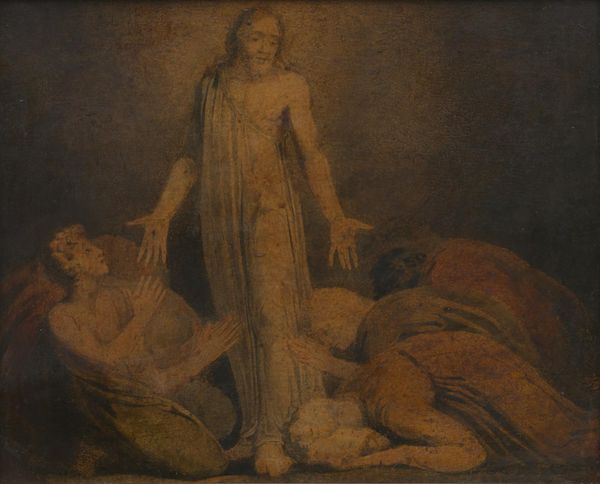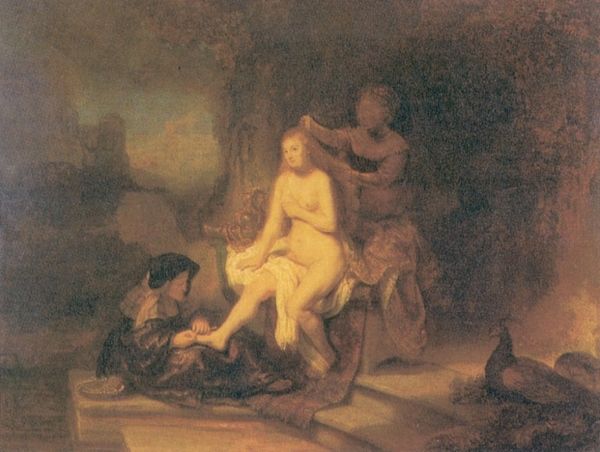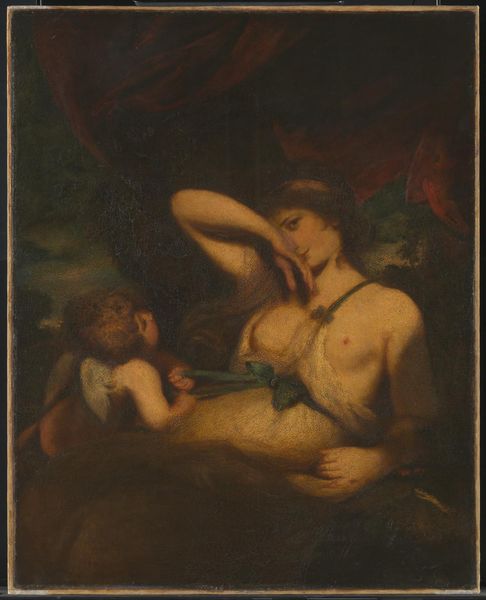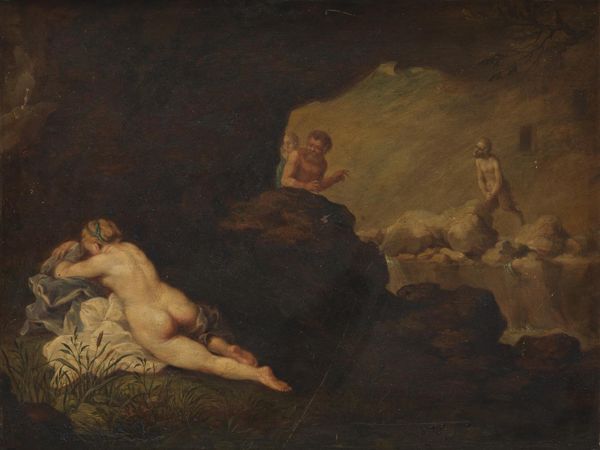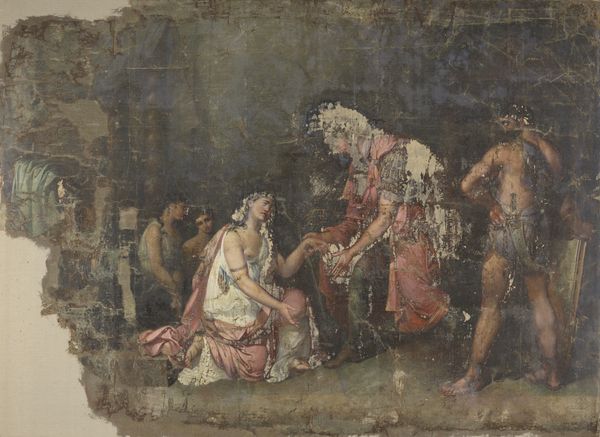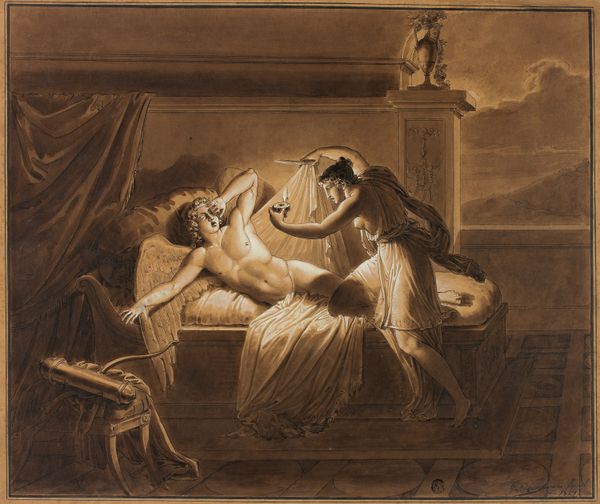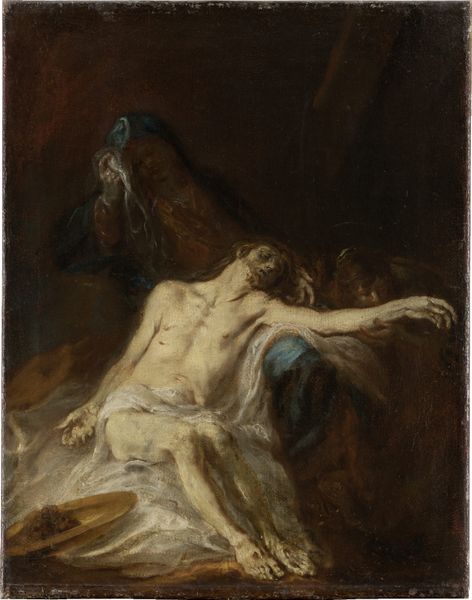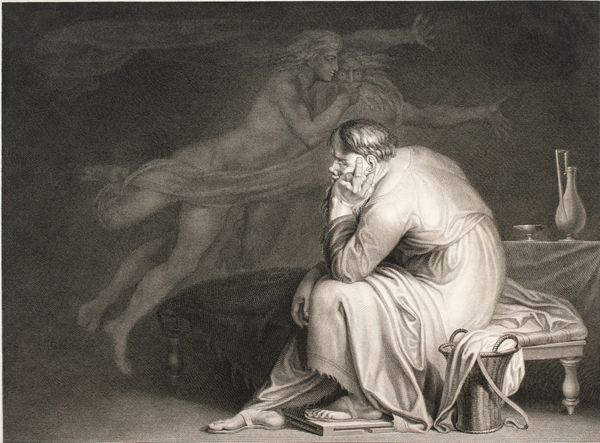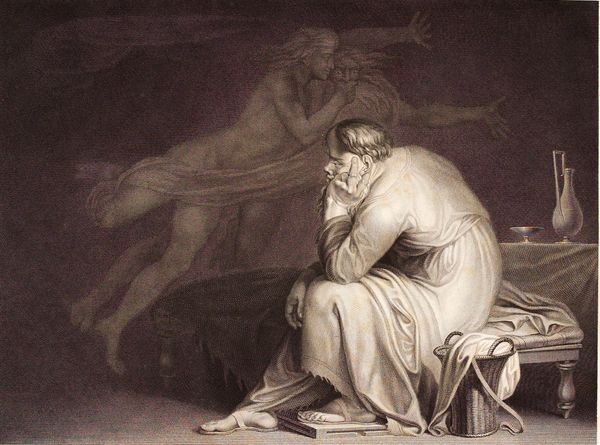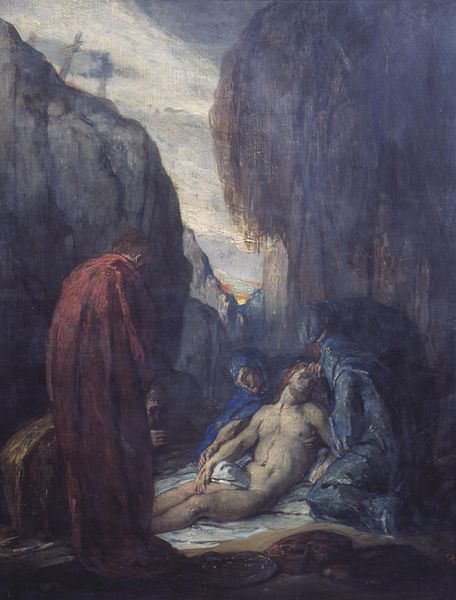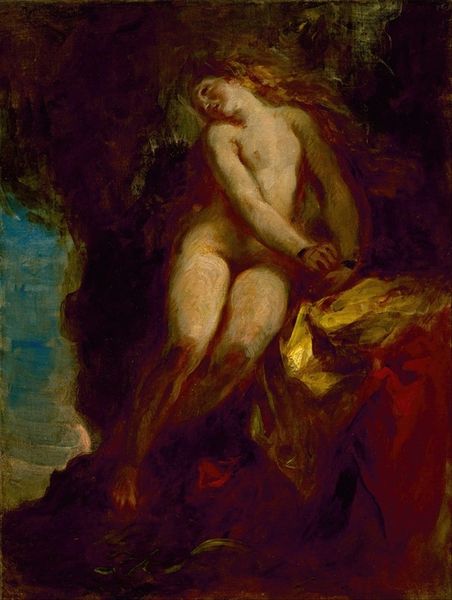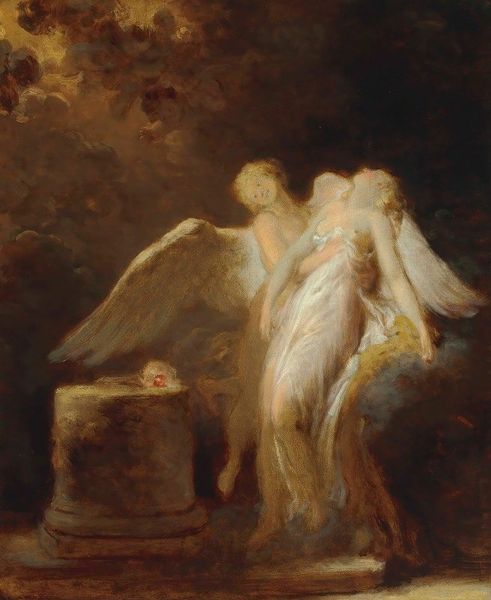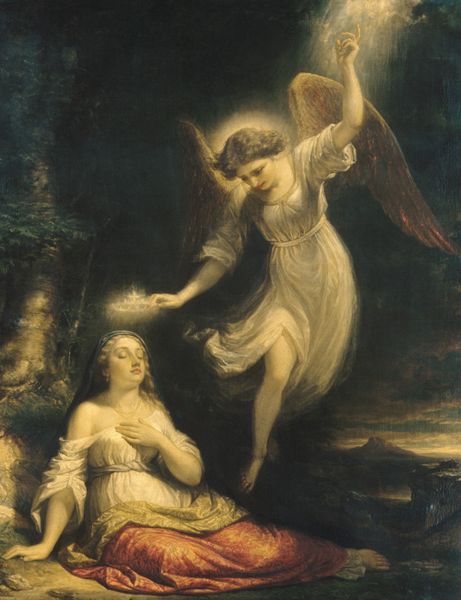
Dimensions: support: 406 x 499 mm
Copyright: CC-BY-NC-ND 4.0 DEED, Photo: Tate
Curator: This is William Blake’s "Christ Appearing to the Apostles after the Resurrection," part of the collection at the Tate. Editor: It has a certain ethereal quality, doesn’t it? The muted tones and indistinct forms contribute to a dreamlike atmosphere. Curator: Indeed. Blake's religious beliefs deeply influenced his artistic output, using biblical narratives to critique societal norms. The scale of the piece, roughly 40 by 50 centimeters, draws you in. Editor: The composition, though loosely rendered, directs the eye toward Christ, a towering figure amidst the supplicating apostles. Notice how the light emanates from him, emphasizing his spiritual presence. Curator: Yes, Blake was deeply invested in the power of the image to convey complex spiritual states, often rejecting academic conventions. This painting is not just a representation of a biblical scene, but a potent statement about faith and doubt in the late 18th century. Editor: It’s a remarkably ambiguous image, provoking questions about belief and the human condition. Curator: Precisely, its enduring power lies in its ability to elicit personal reflection and cultural dialogue.
Comments
tate 8 months ago
⋮
http://www.tate.org.uk/art/artworks/blake-christ-appearing-to-the-apostles-after-the-resurrection-n05875
Join the conversation
Join millions of artists and users on Artera today and experience the ultimate creative platform.
tate 8 months ago
⋮
In the final chapter of St Luke’s gospel, two angels announce that Christ has risen from the tomb. Later, Christ himself appears to his disciples. As Blake shows here, they are terrified, thinking that they are seeing a ghost. Christ tries to reassure them by holding out his hands to show the wounds he received at the crucifixion, and saying ‘Behold my hands and my feet, that it is I myself: handle me, and see; for a spirit hath not flesh and bones, as ye see me have.’ Gallery label, February 2004
